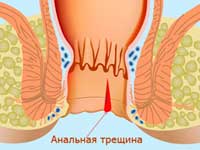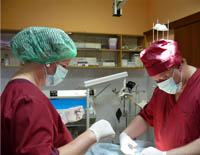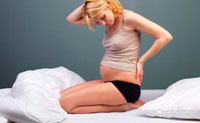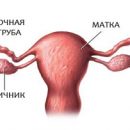In case of crown disease, any sections of the gastrointestinal tract can be affected - from the oral cavity to the anus.
Content
In the present, everyone knows that the Crohn's disease can hit any digestive tract from the pharynx to the rear pass and the area around it, but the end (iliac) intestine is precisely a favorite location, which is moving into a blind intestine.
Types of disease Crown
There are such forms:
Ileokolit - The most common form, the defeat of the iliac and colon.
Ileit - Isolated iliac damage.
Gastrointestinal shape - With the defeat of the stomach and twistencredit.
Eynoileit - In the process involved skinny and iliac.
Krone's disease colon - Isolated damage to the large intestine
Ileokolit
Terminal Ileit, or Ileokolit - this is the defeat of the iliac and colon. Manifests in diarrhea with a frequency of chair (6—7 times a day). Stools semi-liquid consistency, significant volume, with the presence of mucus, blood streaks, leukocytes are revealed microscopically.
Ileitz during Crohn's disease
Ileit – Inflammation of the todium gut. The disease can begin with nausea, vomiting, diarrhea, pronounced hiring in the stomach, sometimes compressing stomach pain. Then weakness are joined, general ailment, cold sweat, fever (temperature can reach 38-39 °C and higher), headache, A sharp drop in blood pressure, frequent weak pulse, Blue skin and mucous membranes. The symptoms of acute appendicitis are characteristic of the iliac damage. In addition, with this localization, the phenomena of intestinal obstruction often occurs.
Gastrointestinal shape of crown disease
In this form, burning pain in the epigastria occurs more often related to meals; Characterized anorexia, disgust for food, weight loss (about 40%). Significant individual variations. Such symptoms are found in individuals without proven peptic ulcers («Unclear dyspepsia»); In these cases, standard therapy is less effective. Dyspepsic phenomena - exhaust air, food, nausea, heartburn
Eynoileit with Crohn's disease
Eynoileit - the process involves a skinny and iliac.
The disease can begin with local symptoms — nausea, vomiting, diarrhea, pronounced hiring in the stomach, sometimes spastic pain. Then weakness are joined, general ailment, cold sweat, fever (temperature can reach 38-39 °C and higher), phenomena of general intoxication, symptoms of vascular collapse. In other cases, general symptoms appear first, and after some time (from half an hour to several hours) they are joined by signs of inflammatory damage to the small intestine.
Krone's disease colon
In case of damage to the colon, heavy diarrhea occurs more often than with the fine-turn localization of the process. The clinical course in this case resembles the symptoms of nonspecific ulcerative colitis. There is a chair with blood admixture, sharp calls for defecation at night.
 In engaging in the process of long-range colon departments, the disease can show themselves with symptoms of acute paraproititis (changes in the mucous membrane and skin in the anus area (swelling, cracks, ulcers, recurrent abscesses, fistulas), as well as the development of the anal or rectal stenosis due to constipation.
In engaging in the process of long-range colon departments, the disease can show themselves with symptoms of acute paraproititis (changes in the mucous membrane and skin in the anus area (swelling, cracks, ulcers, recurrent abscesses, fistulas), as well as the development of the anal or rectal stenosis due to constipation.
For this form, crown disease is also characteristic of abdominal pain (especially in the left side of the abdomen), a slight increase in temperature, joint pain. Typically, patients do not give these symptoms. Next appear rectal (from the rectum) of bleeding or bleeding purulent discharge. The amount of blood allocated per day can range from several drops to 20 milliliters. Sometimes there is a diarrhea with an admixture of fresh blood.
The complications of the Crohn disease include narrowing of the intestinal lumen (stricture), outdoor and internal intestinal fistulas, breakthrough of intestines, bleeding. Stricture - Some of the most frequent complications of Crohn's disease. Their presence is clinically manifested by grabs-like pain in the abdomen, constipation, development of partial or less frequent intestinal obstruction.
Massive bleeding associated with the destruction of the walls of the vessels at the site of ulcerations, exhibit itself, depending on the localization of the process, the presence of blood scarlet in the wheel masses, melanoma (black tar-shaped chair), and when the stomach is damaged to the color of the coffee grounds, as well as common symptoms, Characteristic to anemia.
The inflammatory process in the disease of the Crown gradually spreads from the sublimatist on the muscular and serous intestinal wall layers and can lead to the formation of infiltrates and abscesses in the abdominal cavity and the subsequent occurrence of fistula. The fistula is a pathological channel connecting the hollow organs among themselves or some internal organ with the surface of the skin and mucous membrane. Swiss can be located between the intestine and the hollow organ, as well as between the intestine hinges. External fistulas open the outlet on the front abdominal wall. Perforations (breakthroughs) of the intestine in the disease Crown are more commonly covered, which is important to keep in mind to properly understand the clinical course of the disease.









